

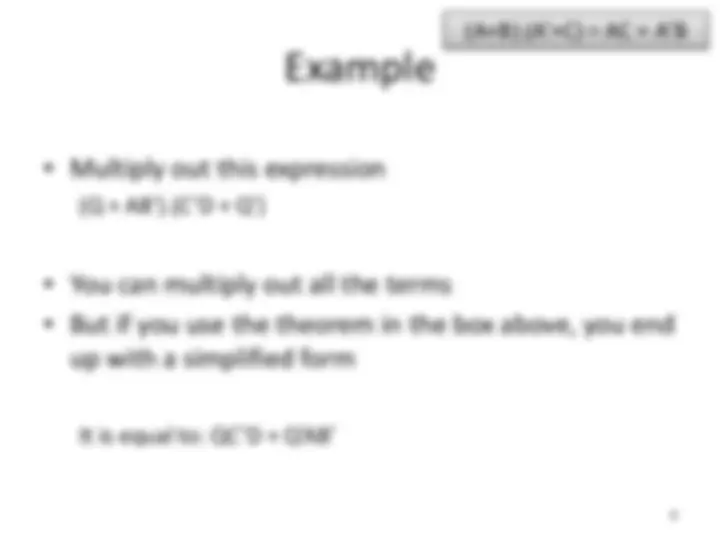
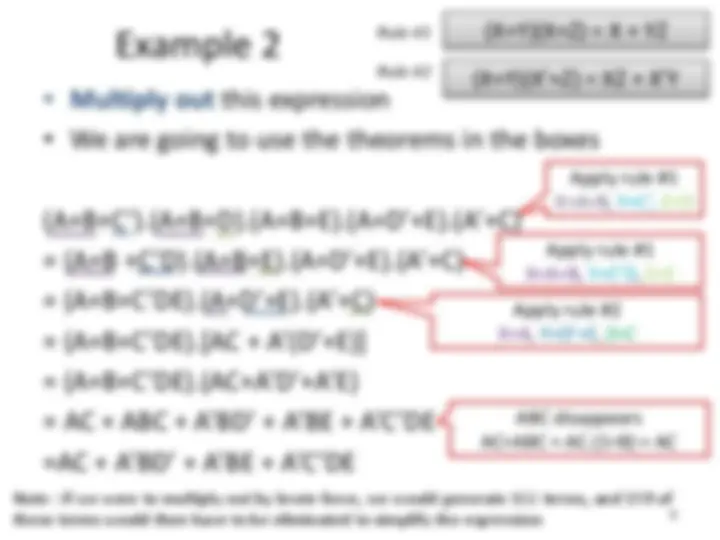
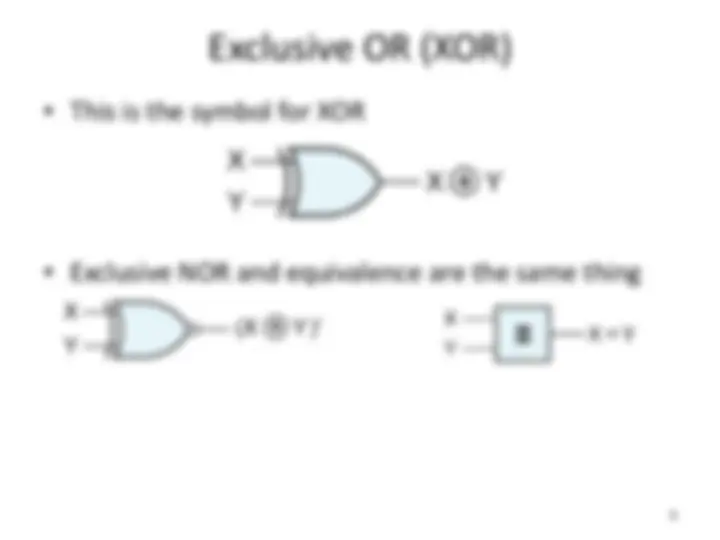
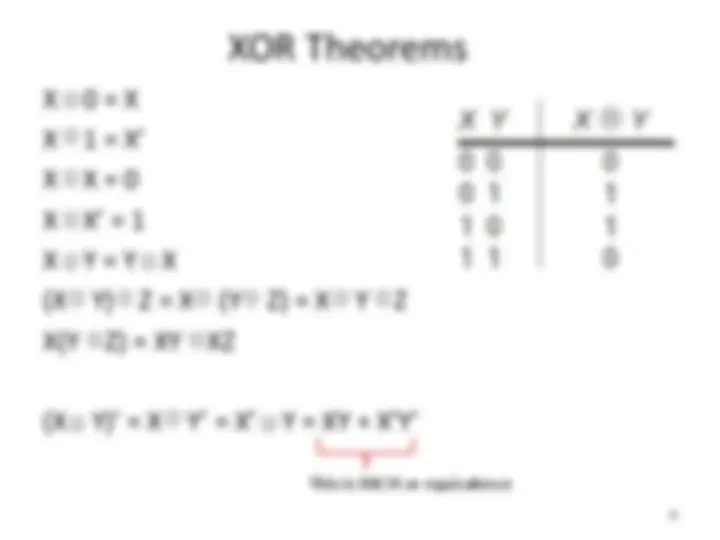
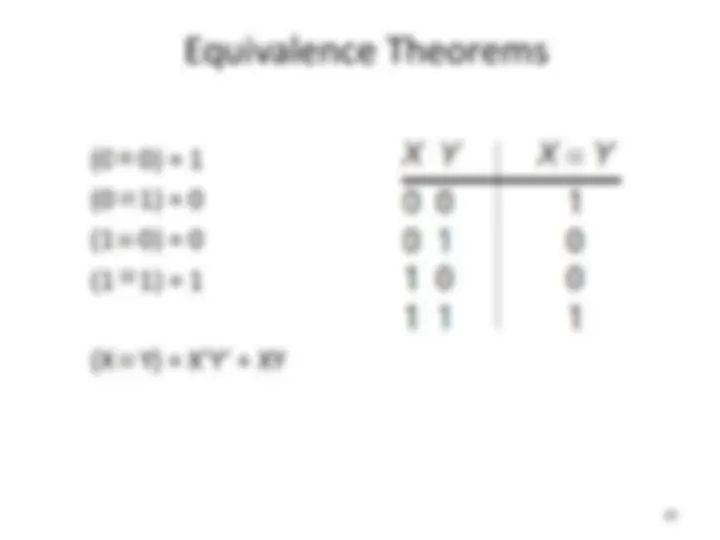
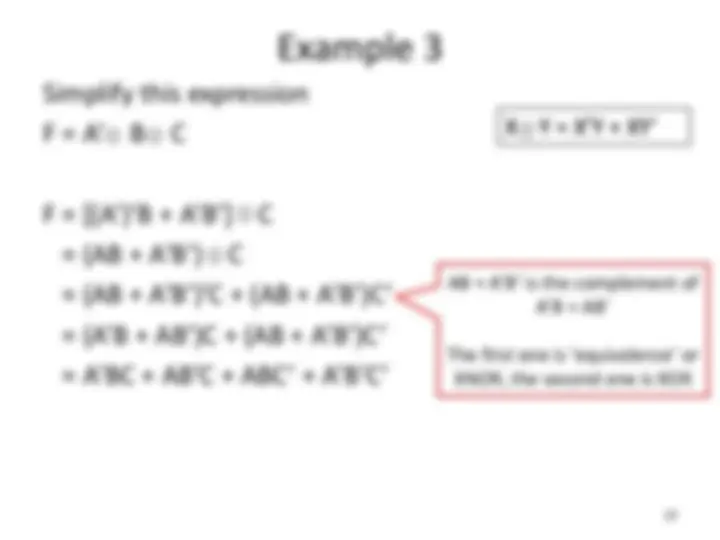
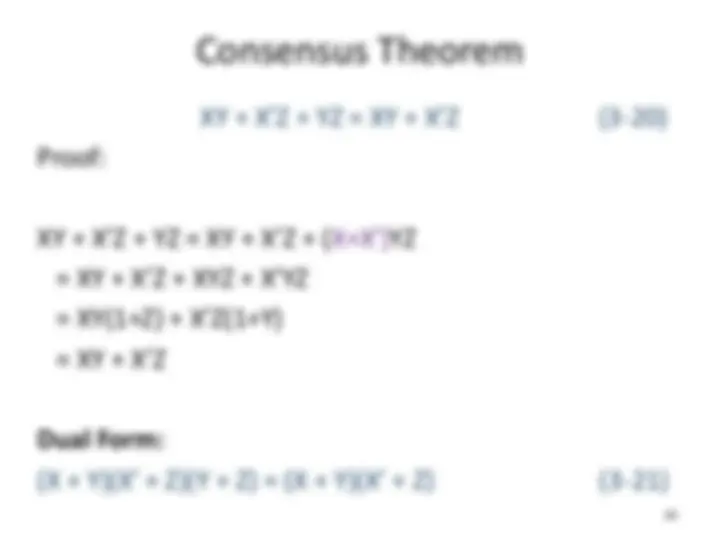
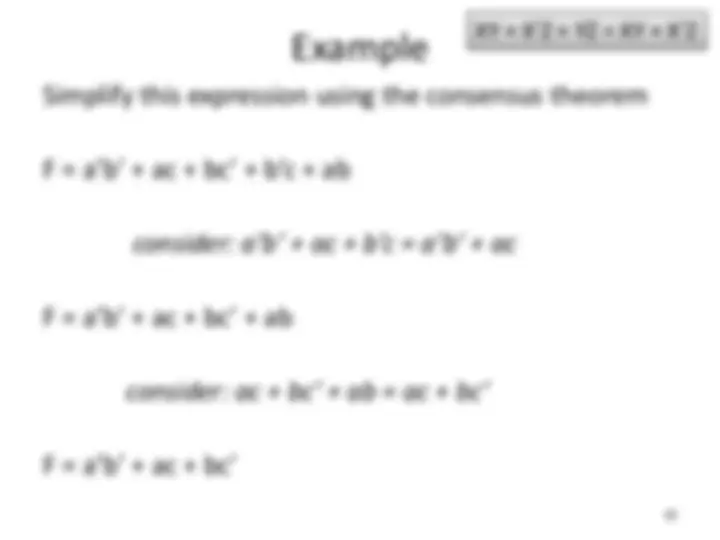
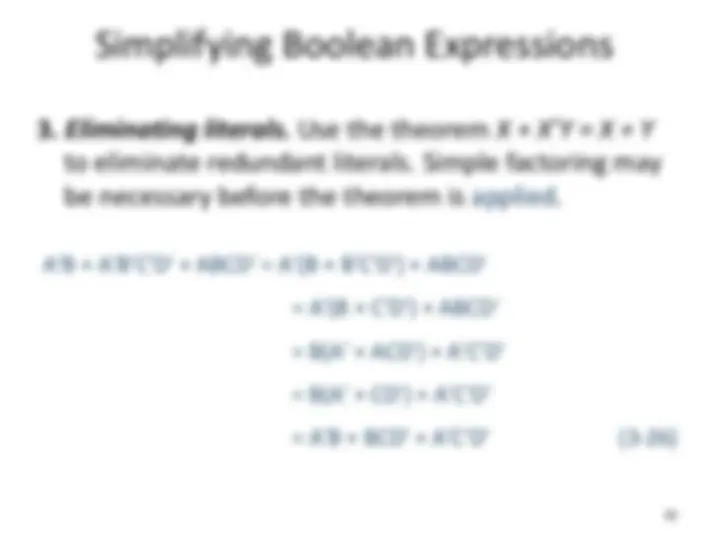
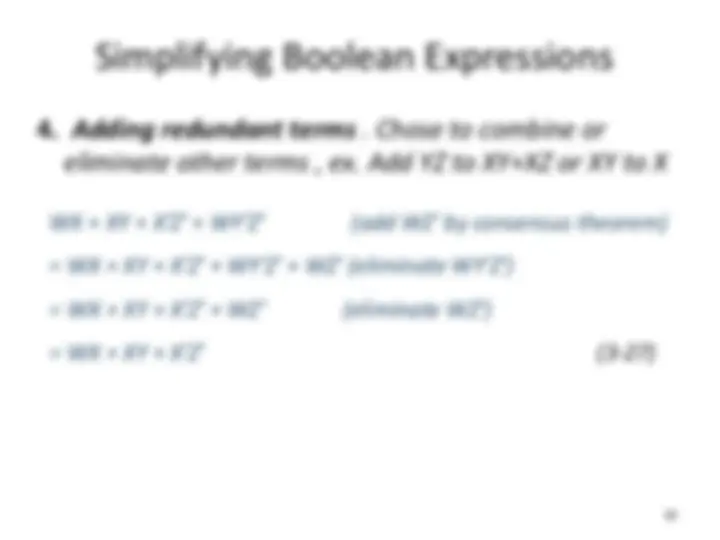
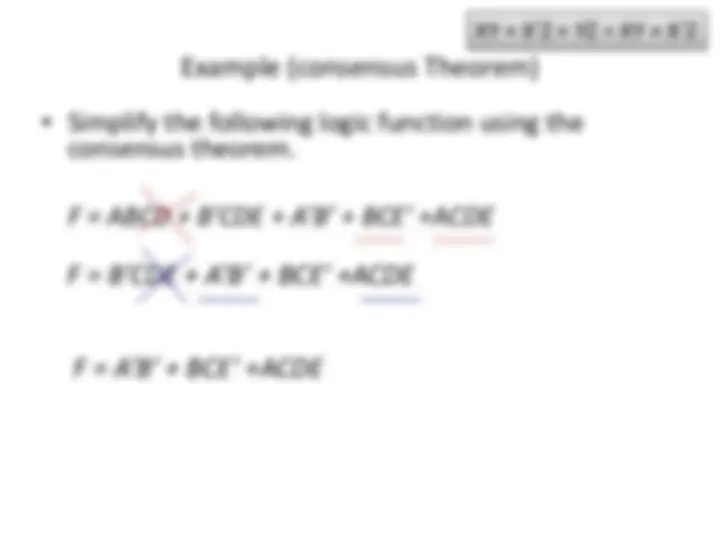
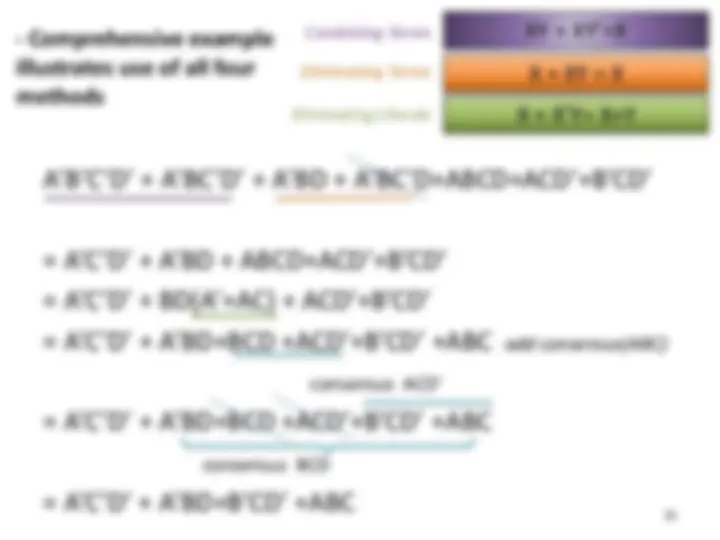


Study with the several resources on Docsity

Earn points by helping other students or get them with a premium plan


Prepare for your exams
Study with the several resources on Docsity

Earn points to download
Earn points by helping other students or get them with a premium plan
Community
Ask the community for help and clear up your study doubts
Discover the best universities in your country according to Docsity users
Free resources
Download our free guides on studying techniques, anxiety management strategies, and thesis advice from Docsity tutors
In class notes and lecture notes from professor.
Typology: Lecture notes
1 / 21

This page cannot be seen from the preview
Don't miss anything!














3.1 Multiplying Out and Factoring Expressions 3.2 Exclusive-OR and Equivalence Operations 3.3 The Consensus Theorem 3.4 Algebraic Simplification of Switching Expressions
Example 2
Also called, the equivalence operation, A B A B 0 1 1 0 Exclusive OR (XOR) and Equivalence A B 0 0 0 1 1 0 1 1
A xnor B 1 0 0 1 Also written, A XOR B It is called equivalence operation because it is equal to 1 when A=B A B = A’B + AB’ it’s equal to 1 at terms 01 (A’B) and 10 (AB’) A B = AB + A’B’ it’s equal to 1 at terms 00 (A’B’) and 11 (AB)
Exclusive OR (XOR)
Equivalence Theorems (0 0) = 1 (0 1) = 0 (1 0) = 0 (1 1) = 1 (X Y) = X’Y’ + XY
Show by Boolean algebra that XOR and equivalence are the complement of each other (X Y)’ = (X’Y + XY’)’ = (X+Y’).(X’+Y) = XY + X’Y’ = (X Y)
Apply DeMorgan’s (A+B)’ = A’B’, (AB)’ = A’+B’ Apply (A+B)(A’+C) = AC + A’B Here, A=X, B=Y’, C=Y
Example 3 Simplify this expression F = A’ B C F = [(A’)’B + A’B’] C = (AB + A’B’) C = (AB + A’B’)’C + (AB + A’B’)C’ = (A’B + AB’)C + (AB + A’B’)C’ = A’BC + AB’C + ABC’ + A’B’C’ X Y = X’Y + XY’ AB + A’B’ is the complement of A’B + AB’ The first one is ‘equivalence’ or XNOR, the second one is XOR
Consensus Theorem XY + X’Z + YZ = XY + X’Z (3-20) Proof: XY + X’Z + YZ = XY + X’Z + (X+X’)YZ = XY + X’Z + XYZ + X’YZ = XY(1+Z) + X’Z(1+Y) = XY + X’Z Dual Form: (X + Y)(X’ + Z)(Y + Z) = (X + Y)(X’ + Z) (3-21)
Last Part from Exercises
Simplifying Boolean Expressions
1. Combining terms. Use the theorem XY + XY′ = X to combine two terms. 2. Eliminating terms. Use the theorem X + XY = X to eliminate redundant terms if possible; then try to apply the consensus theorem ( XY + X′Z + YZ = XY + X′Z ) to eliminate any consensus terms. abc′d′ + abcd′ = abd′ [X = abd′, Y = c] (3-24) Section 3.4 (p. 68-69) a′b + a′bc = a′b [X = a′b] a′bc′ + bcd + a′bd = a′bc′ + bcd [X = c, Y = bd, Z = a′b] (3-24)
Simplifying Boolean Expressions
4. Adding redundant terms. Chose to combine or eliminate other terms , ex. Add YZ to XY+XZ or XY to X WX + XY + X′Z′ + WY′Z′ (add WZ′ by consensus theorem) = WX + XY + X′Z′ + WY′Z′ + WZ′ (eliminate WY′Z′) = WX + XY + X′Z′ + WZ′ (eliminate WZ′) = WX + XY + X′Z′ (3-27)
XY + X’Z + YZ = XY + X’Z